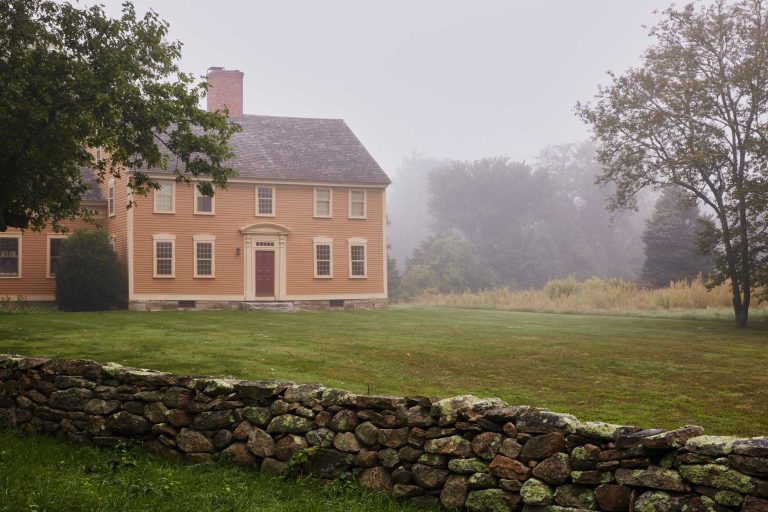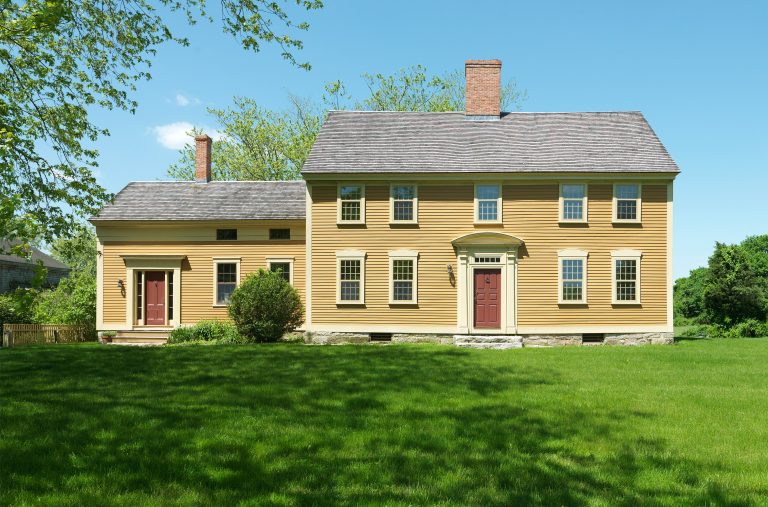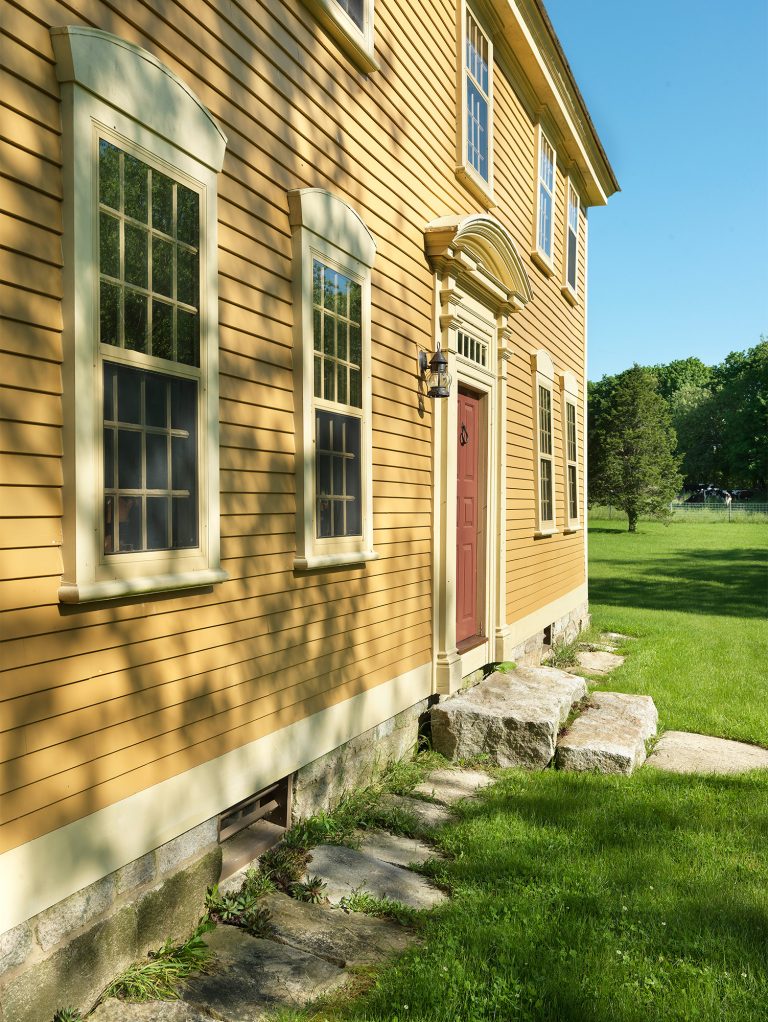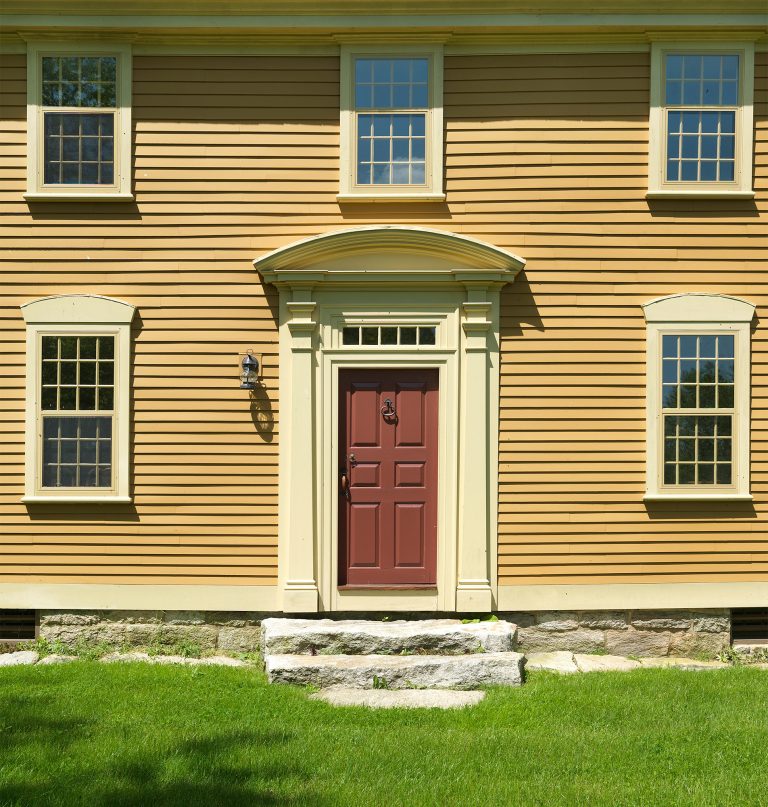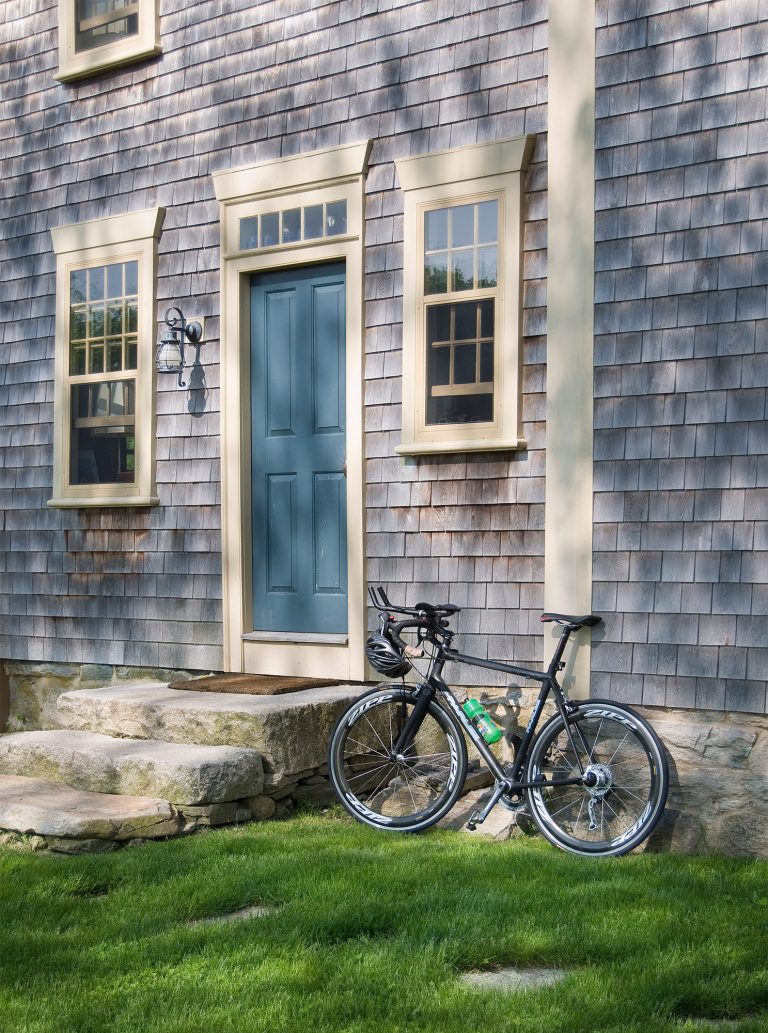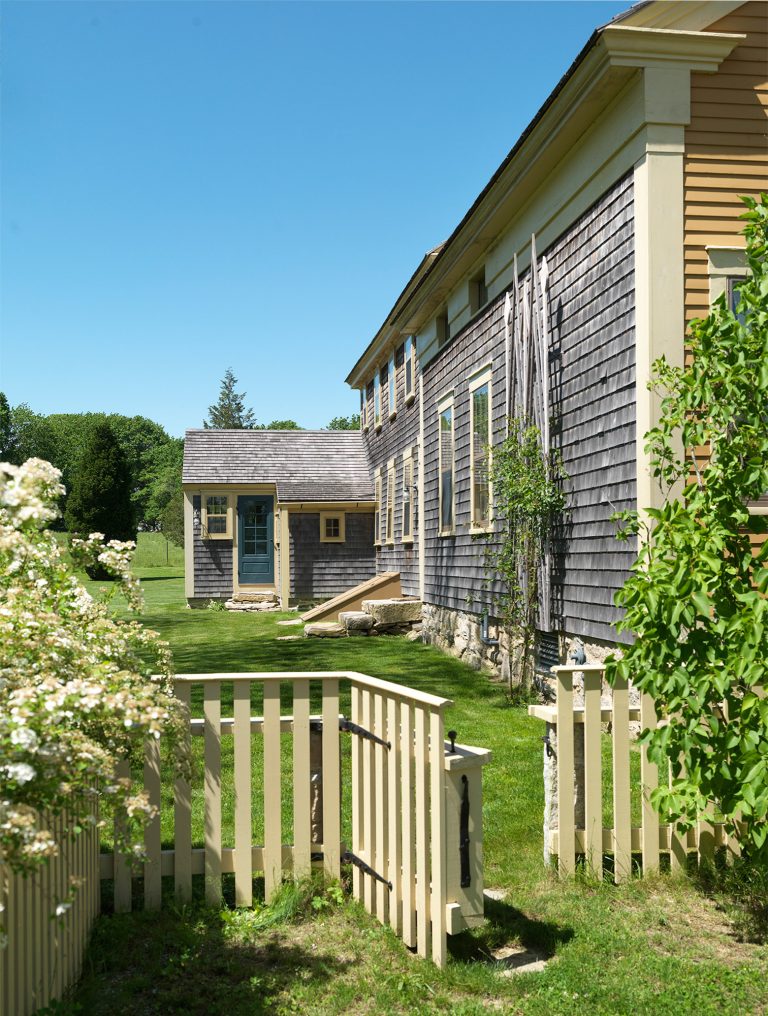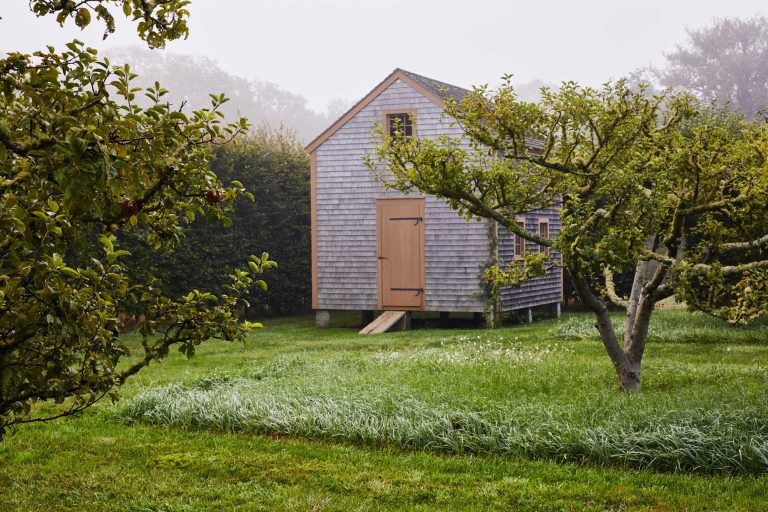When Timothy Bryant started his work on the Cory House, a late-18th-century farmstead in Westport, Massachusetts, the property was slated for demolition. Its grounds were strewn with debris, its outbuildings were in complete disrepair, and the exterior planking was so damaged in some areas that vegetation grew through the walls. Little did he know that this was to become an irresistible counter-part to the fast-pace of Manhattan living as his primary residence.
With the help of a local preservation consultant, Bryant pieced together the story of the house. Tree-ring dating performed on the oak post-and-beam framing revealed that the lumber was cut in 1777, as the new nation fought for its independence. When the faux-brick siding came off, it revealed shadow lines of the original front door surround and pediment and curved window heads, providing a blueprint for new exterior trim.
Fragments of interior millwork, recovered from a burn pile on the property, helped to accurately re-create new cornices, door casings, base boards, chair rails, sliding shutters and mantels. A box of snapshots, taken by people who had lived in the house from the 1920s to the 1960s, was discovered in one of the outbuildings. This spectacular windfall of reference information was used to ascertain appropriate designs, colors, textures and materials for the interior. The beehive oven was rebuilt and restored to its rightful place according to a description found in a 1796 will written by the original inhabitant, William Cory.
The property was further developed selectively with a few related, age-appropriate structures. An 1840s carriage house, moved to the site from Coventry, Rhode Island, contains chilled water units as well as electrical, telephone and cable services. And a mid-19th century granary structure – which once belonged to a Cory family relative – in Tiverton, Rhode Island, was faithfully copied to anchor an orchard of mature apple trees, transplanted from nearby.
In 2004, the house received the Sarah R. Delano Preservation Award, given to individuals and organizations that have made “outstanding contributions to rehabilitation, restoration and interpretation of the historic character and environment of Greater New Bedford.” A preservation award from the Massachusetts Historical Commission followed in 2007, and entry to the National Registration of Historic Places followed shortly thereafter.
